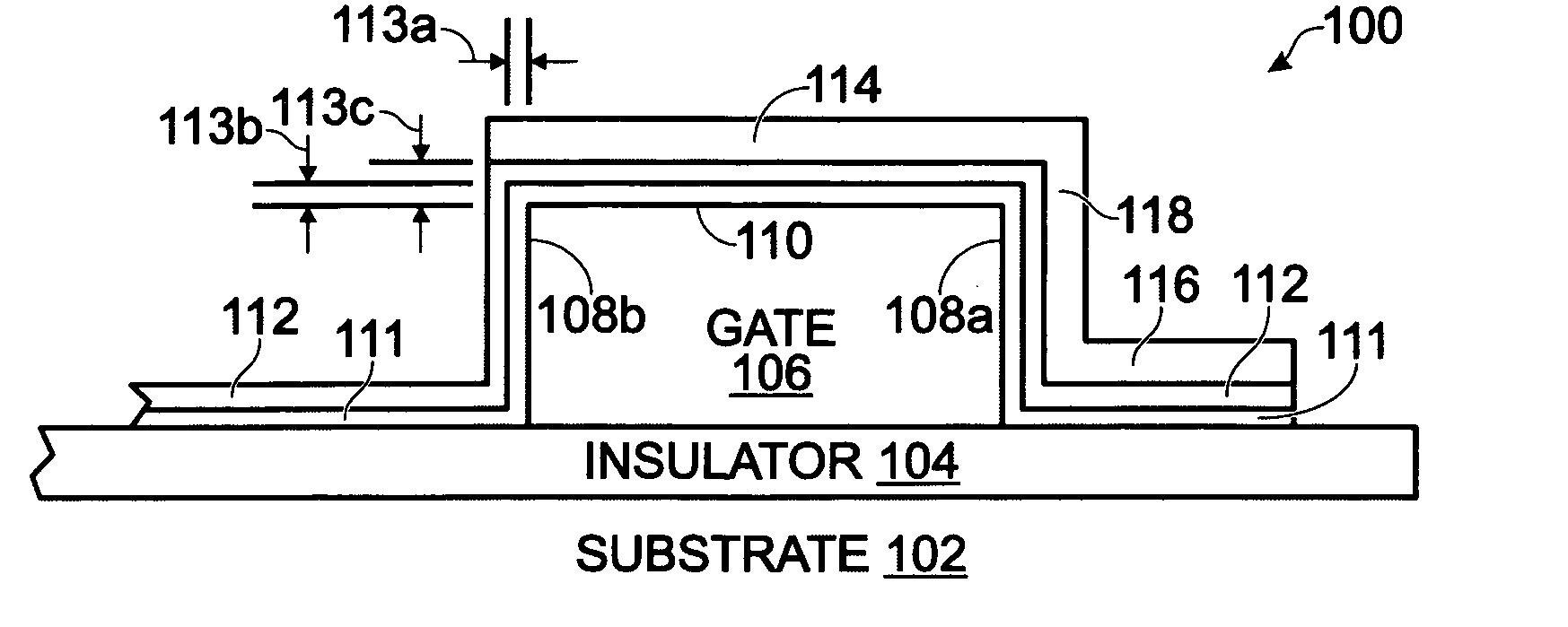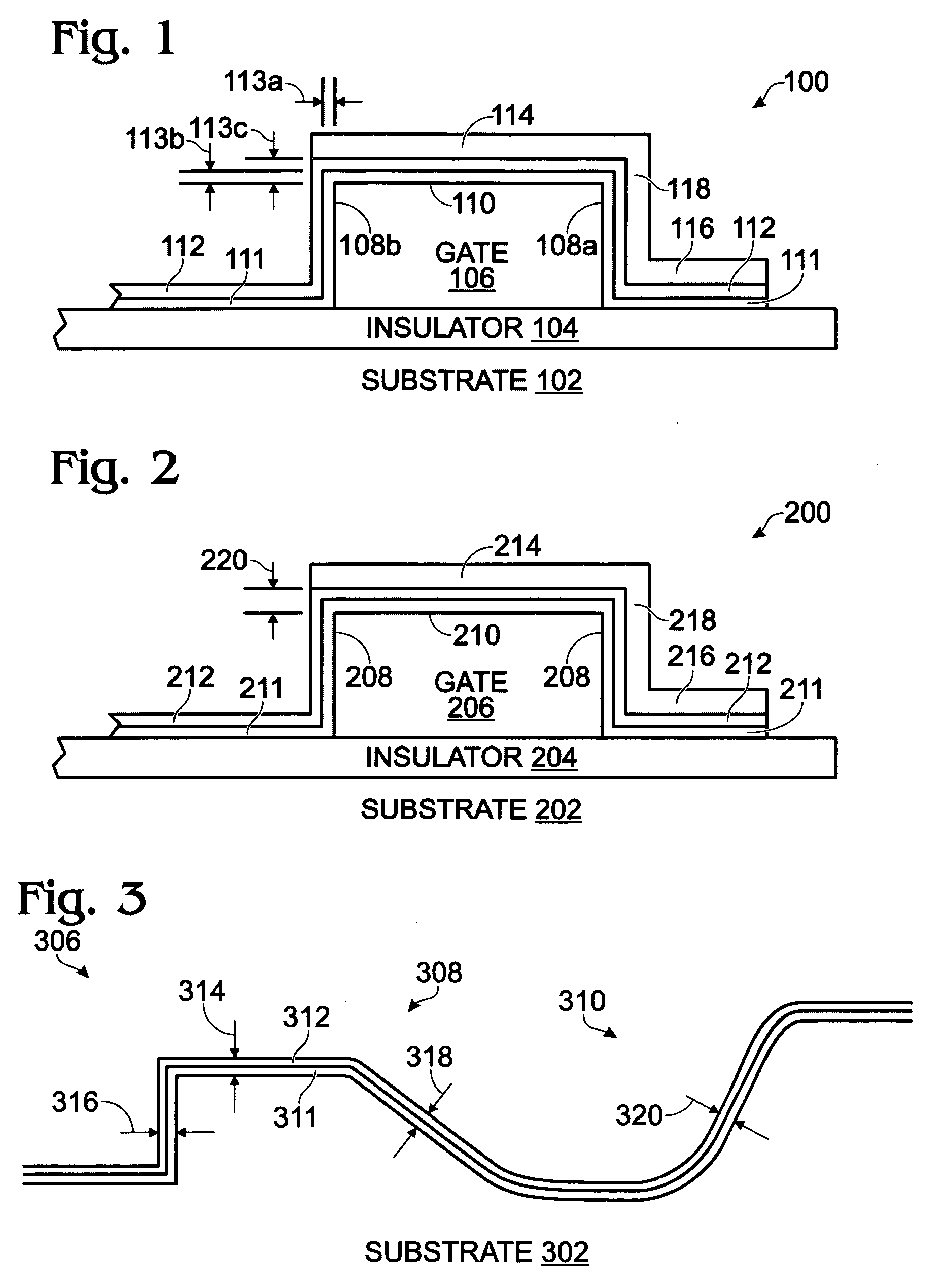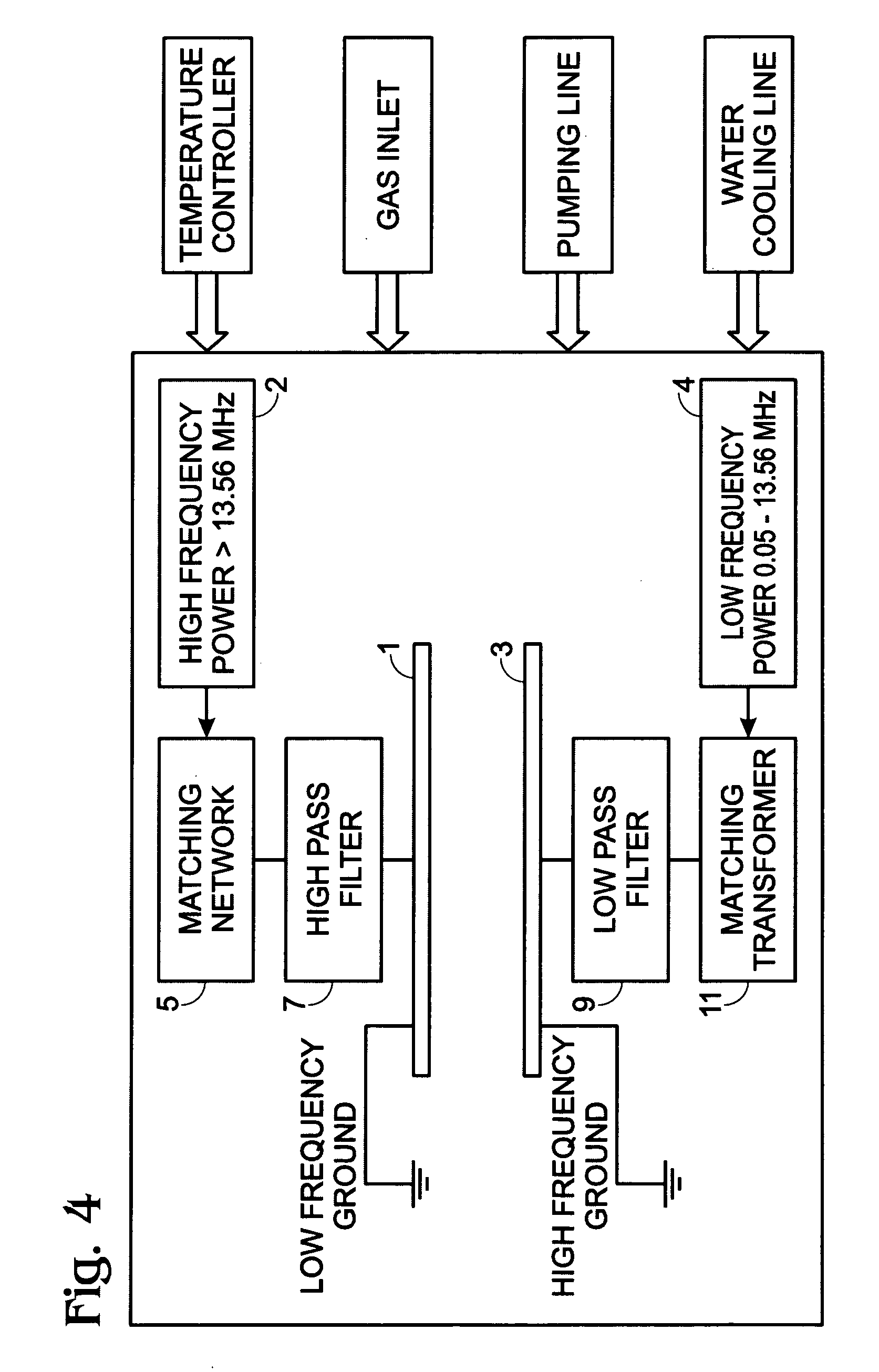High-density plasma multilayer gate oxide
a multi-layer, gate oxide technology, applied in the direction of semiconductor devices, electrical apparatus, transistors, etc., can solve the problems of voids or defects, poor electrical performance of oxide or sub-oxide thin-films, and thermal oxidation process that is not suitable for low-temperature devices, so as to improve bulk and interfacial quality, improve thermal budget, and reduce the effect of oxidation efficiency
- Summary
- Abstract
- Description
- Claims
- Application Information
AI Technical Summary
Benefits of technology
Problems solved by technology
Method used
Image
Examples
Embodiment Construction
[0035]FIG. 1 is a partial cross-sectional view of a vertical thin-film transistor (V-TFT) device. The V-TFT 100 comprises a substrate 102 and a substrate insulation layer 104 overlying the substrate 102. Generally, the substrate 102 can be a material such as glass, Si, Si , Si , quartz, plastic, or temperature-sensitive material. A gate 106, having vertical sidewalls 108 and a top surface 110, overlies the substrate insulation layer 104. A first Silicon oxide (SiOx) layer 111 overlies the gate top surface 110 and sidewalls 108 having a step-coverage of greater than 65%, where x is less than, or equal to 2. Likewise, a second SiOx layer 112 overlies the first SiOx layer 111, and has a step-coverage of greater than 65%. Together, the first Si oxide layer 111 and the second Si oxide layer 112 can be considered as the gate insulator or a gate insulator stack.
[0036] Using the first Si oxide layer 111 as an example, step-coverage is defined as the ratio of a vertical aspect thickness 113...
PUM
 Login to View More
Login to View More Abstract
Description
Claims
Application Information
 Login to View More
Login to View More - R&D
- Intellectual Property
- Life Sciences
- Materials
- Tech Scout
- Unparalleled Data Quality
- Higher Quality Content
- 60% Fewer Hallucinations
Browse by: Latest US Patents, China's latest patents, Technical Efficacy Thesaurus, Application Domain, Technology Topic, Popular Technical Reports.
© 2025 PatSnap. All rights reserved.Legal|Privacy policy|Modern Slavery Act Transparency Statement|Sitemap|About US| Contact US: help@patsnap.com



